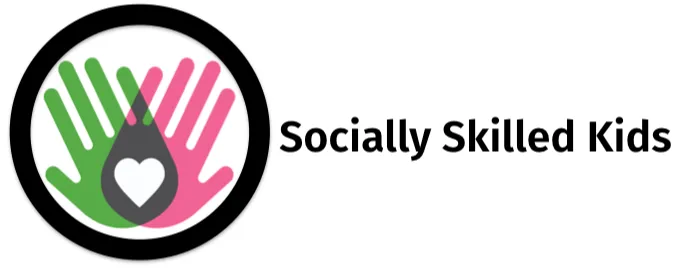Why You Shouldn't Solve Your Students Problems
Jul 15, 2020
Do your students get upset over little things? Do they whine or complain when they don’t get their way? Do they have few or no strategies when trying to solve small problems?
Mine do!
It’s concerning to see how easily many children get upset, give up, and seem genuinely baffled when faced with even the smallest of problems.
Some examples of small problems that I see students getting upset over are;

- Not Called On
- Not Called On First
- Needing To Wait
- Not Liking An Activity
- Not Doing Something Perfectly (their version of perfectly)
- Not Getting The Seat They Want
- Not Getting A Color They Want
- Not Getting To Go First In A Game Or In Line
- Someone Bumped Into Them
- Someone Looked At Them Funny
- Someone Is Touching Them
- Someone Said Something To Them That They Didn’t Like….
And the list goes on and on…
Imagine if the students could solve these problems on their own, without getting super upset?
Teaching your students to think of problems like these as small problems, or as I like to call them 'No problem, problems' is a great way to initiate successful problem solving.
First, students need to understand that their problem is small (assuming it really is), then, you can start to work on how to solve it and how to match the size of the emotion to the size of the problem.
*Note: Be sure to work on this before the student has a problem, rather than during a problem. It is very difficult to teach a student during a problem.
Why Is This Important?
Children need to develop good problem solving skills in order to get along with others and take care of their needs. They need to be able to stay calm in order to handle small problems quickly and effectively. And they need to be able to think through and try a variety of possible solutions, without getting so frustrated that they can’t go on when something doesn’t work out immediately.
Here Are 5 Ways We Can Help Our Students Learn To Solve Their Own Problems
1. Stop immediately solving small problem for our students
It’s very tempting to solve our students small problems quickly and efficiently, rather than take the time to let them figure out how to do it themselves. But when we do, we take away their opportunity to learn.
Of course, there are times when we simply have to make a quick fix, in order to get done what we need to get done. But, to the extent possible, try to let your students solve their own problems whenever possible so that they get practice doing so.
Being able to solve their own problems not only frees up your time, but helps the child to develop confidence and independence.
There are many examples of “small problems” that children face everyday in our classrooms, that they should be encouraged to solve on their own. Some examples may include; finding something in the classroom such as the trash can, the pencil sharpener or the tissue box.
It’s easy to say, “it’s right over there” while pointing to the location of the desired item. But it will help the student learn to solve this problem if you do not give them the answer.
Instead try playing “hot and cold.” As the child gets closer to the item you say words like, “warm, warmer, hot, hotter, boiling, etc.” And when they turn away from the desired item you say words like, “cool, cold, colder, freezing, frigid, etc.”
2. Help students get comfortable with “the struggle”

Problem solving can be frustrating for anyone. Especially when the problem does not get solved easily or quickly, or maybe not at all. But learning how to handle 'The struggle' is very important.
Giving your students opportunities to experience and get comfortable with 'The struggle' will serve them well.
You can help your students get comfortable with the struggle by preparing them ahead of time for it. Tell them that they may feel uncomfortable or even frustrated while trying to solve a problem that you are about to give them or let them experience, and that it is okay to feel that way.
There are lots of fun games that you can play with your students to encourage them to get more comfortable with that struggle.
One fun game you can play is called Tied Up In Knots. Another is called Hula Hoop Pass. To get a printable of the directions for these fun game click here.
3. Set Up opportunities for students to practice problem solving in safe, supported situations
Even though there are certainly many small problems that come up during a typical day, you can help your students practice problem solving by setting up small problems that you can easily monitor and facilitate healthy problem-solving.
It can be very helpful to do this for your students who struggle greatly with problem-solving. By setting up truly small problems, ones that you know the student can solve, you can help them practice this skill and gain confidence so that they will be able to handle bigger problems and be more independent problem-solvers, as time goes on.
Some examples of very small problems that you can set up: 
- When passing out materials, have one less than you need, for example, if there are 4 students at a table, only put out 3 glue sticks. Watch and facilitate as needed to help students solve this problem, hopefully by sharing a glue stick. They may also get up and get a 4th glue stick.
- When planning to read a particular book, pretend to have misplaced the book. The student(s) must problem-solve to either find the book (which you have conveniently put under some papers on your desk, or read another book instead).
- When speaking to your class, pretend to forget a word you are trying to say, or how to spell something on the board. Ask your student(s) for help. Model good problem-solving behavior and handling 'The struggle' appropriately.
4. Model: Your students are watching everything you do, and even though it may not always seem like it, they are listening too. When you have a small problem, be sure to use this as a teaching opportunity. Try not to simply solve it in silence and move on. Show the students what you are doing and what you are thinking.
- State the problem: for example, “Oh no, my projector wont turn on…”
- State your feeling: if it’s too big of a feeling to match the problem, state how you will calm yourself; “Okay Janet, this is just a small problem, you know you can figure out how to get the projector to turn on, take 2 deep breaths and try again”
- State a possible solution: try it…explain, out loud, why it did or did not work. If it did not work, stay calm and repeat with a different solution, for example; “Well, we can use the projector later and just talk about the activity now.”
5. Explicitly Teach students how to solve small problems on their own
Ultimately we want students to be able to solve small problems on their own, independently. Some students can gain this skill through natural development and thoughtful practice. Others, may need explicit teaching to gain this important life skill.
Problem-solving is especially difficult because experiencing problems can evoke strong emotions for some children. Children who are uncomfortable with 'The struggle', who are perfectionistic, or who lack confidence, grit or resilience, may overreact to even the smallest of problems.
If you would like some in depth activities to teach your students about problem sizes and emotional reactions, click here to take a look at this resource.

LOVE FREEBIES?

Included is A handy poster and activity. This resource is a great way to teach your students the basics of Problem Solving.
Grab This Activity And Much More!
Simply enter your name and email address in the form below and you’ll have immediate access to this digital download. By completing the form, you’ll also be joining thousands of like-minded teachers who have already signed up for my free club, The Teacher’s Lounge.
This is a 100% free club where you get awesome social skills resources delivered straight to your in-box each week!
These resources include my monthly Tips & Tricks newsletter {for a particular social skill each month}, as well as a variety of posters, visuals, games and activities designed to support the identified social skill.
Thanks So Much and Happy Teaching!
Cindy ~Socially Skilled Kids
Would you like to receive specially designed, creative and interactive FREE teaching resources?
Join us in the Teacher’s Lounge!

